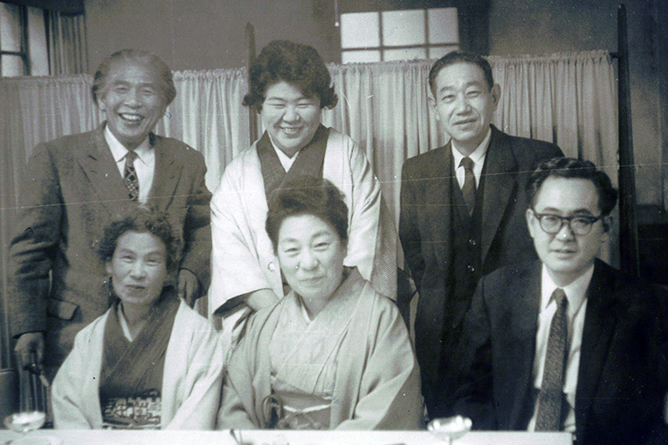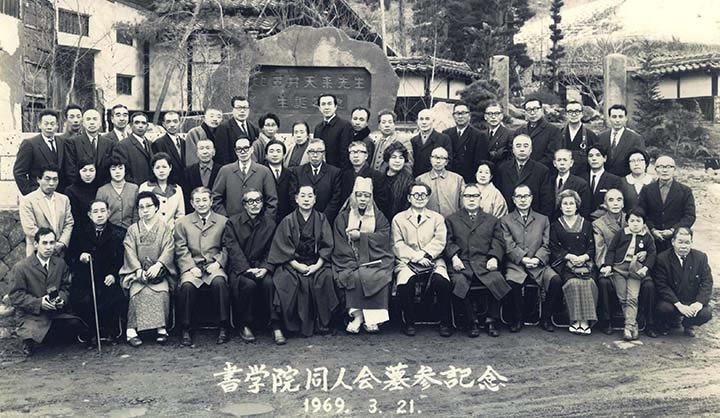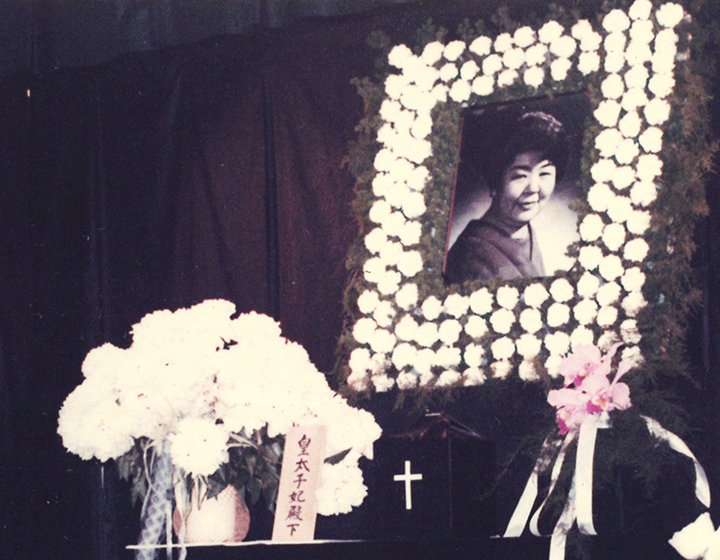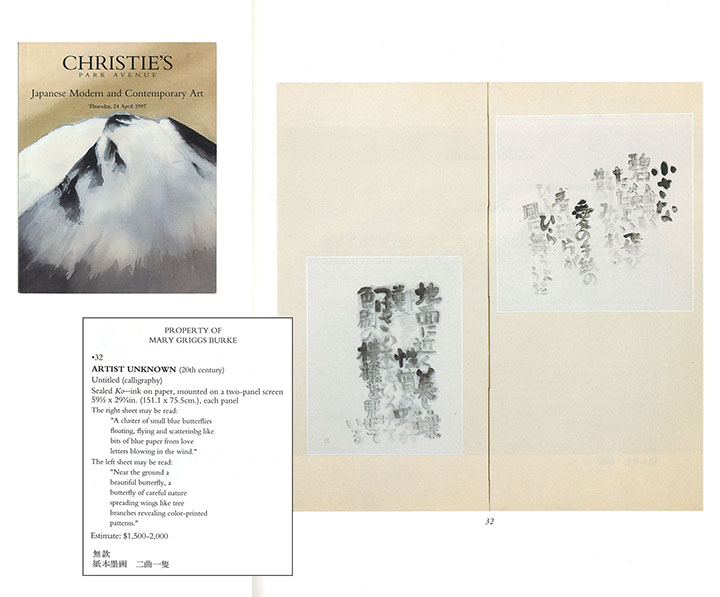
From the left of the upper row, Sokyu Ueda, Shoha, and Kenzo Matsuo (Bansuiken). And from the left of the front row, Keikin Hori, Suikin Amano, and Nankoku.
Nankoku and Shoha were both active as calligrapher, and criticized each other in front of their works, when they would show them at each exhibition. The works of Shoha were perceived to be influenced by Nankoku frequently. Shoha fixed deep traces of brush strokes on paper, using ‘the mysterious ink’ of Nankoku. Of course, the works of Nankoku were also reflected by Shoha’s works.
Nankoku was based on the tradition of the ancient Chinese calligraphy for 3500 years, which was inherited from his father, Tenrai, and Nankoku pursued the line expression, assuring the essence of calligraphy was the line expression which depended on a disciplined brush-stroke.Nankoku’s works show the firm stations between the whole space and the written line or point, and anybody seeing his works appreciates the overwhelming power of expression in the line movement which is experienced vicariously. And Shoha pursued the possibility of the superlative Kana calligraphy of the Heian era in Japan, which was inherited from her mother, Shokin. Her works show the right stations of poetry, and also expresses the line appearance rousing the power of poetry. The whole space is full of supreme light in Shoha’s works. Poetry shows the shine of life dimly or caressingly in some works, and in other works poetry manifests the presence of life vigorously or eloquently. Her line seems to have been written without intension, but it is the line full of shine which fully displays the power of letter or character composing poetry, therefore it casts the shine on the mind of the appreciator.
Nankoku and Shoha pursued the modern and essential calligraphic expression (Sho) on the basis of the tradition of abundant Chinese and Japanese calligraphy. Nankoku’s attained Sho World should be said,” It must say Hidai.” in the article of The Washington Post, Nov.30. 1964. Similarly, Shoha’s works display her profound inner life on the basis of Christianity and establish her independent Sho World that should be said “It must say Shoha.”

In 1970, Shoha proposed to Nankoku that Tenrai's Exhibition should be held in celebration of the centennial of the Tenrai Hidai's birth ( in 1872). Shoha framed the plan and project with Shogakuin Dojin. As a result, she arranged to hold the chronological exhibition of Tenrai's works and the exhibition of Tenrai's disciples at the same time. She made every effort to hold the exhibition, spending all her time. She finally managed to open Hidai Tenrai Seitan Hyakunen-ten” (Exhibition on the Centennial of the Birth of Tenrai Hidai in Nihonbashi Mitsukoshi Department Store) on May 23 in 1972. At the opening ceremony Shoha collapsed. On May 25, Shoha died at Yokohama City University Hospital, aged 58.

The Crown Princess Michiko (the present Her Majesty the Empress) asked about the absence of Nankoku when Princess visited to appreciate the exhibition, and knew the death of Shoha. On the following day, May 26, the fresh flowers were displayed by Shoha's pillow; these flowers were given by the Crown Princess Michiko. The funeral of Shoha Hidai was held at Imai Biblical Auditorium on June 8.

In April of 1997, a work of unknown artist came up for auction at the auction house Christies in London. “Shinsyu Seiki” of Taikan Yokoyama and the work of Shiryu Morita were also put up at this auction. The work of unknown artist bore neither the artist's signature nor the seal. It was a large two-panel folding screen and poems of “ A small blue butterfly…” on the right panel, and “ Near the ground…” on the left panel were expressed in pleasant rhythm with thick and thin ink. It was the Shoha's work that was exhibited at ‘Shokeikai’. It is unknown whether this work was won a bid, or who made a successful bid for this work.